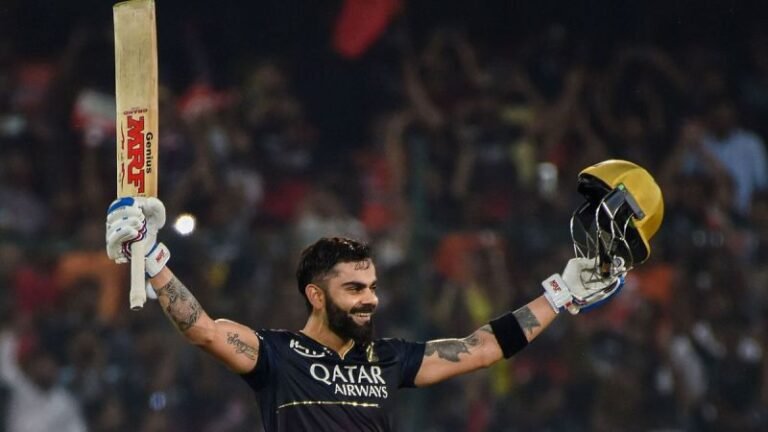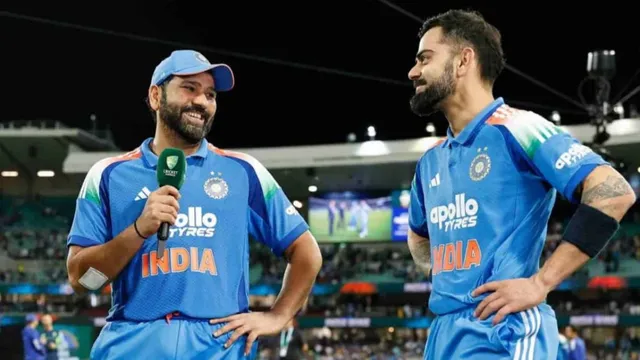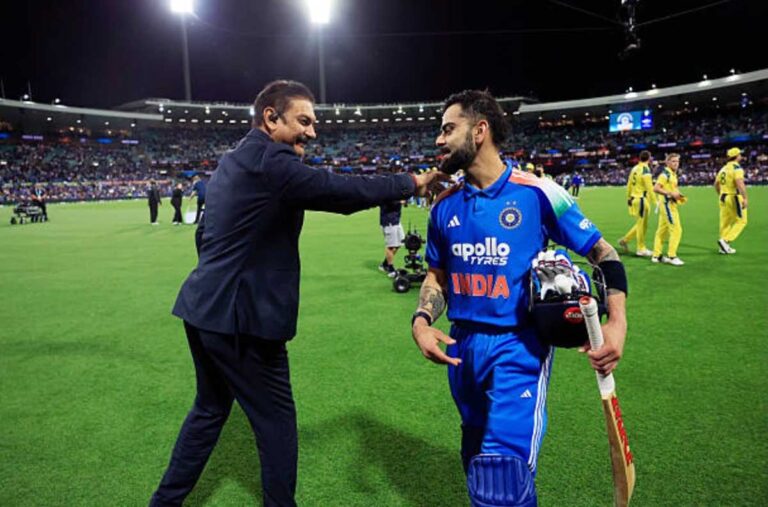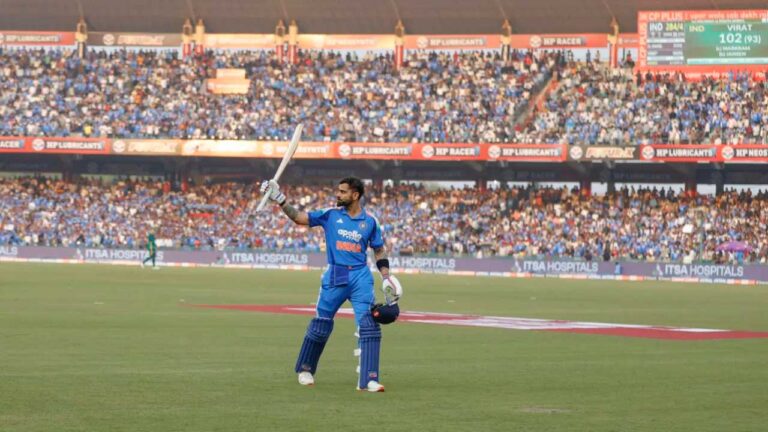The number three position is one of the most crucial positions for any cricketer across formats. It requires technical supremacy and an ice-like temperament, especially in test cricket. The batsman has to reinforce the fort and provide stability after the wicket has fallen at the same time he has to ensure the pressure doesn’t build up too much. Therefore, teams give this huge responsibility to their best batsmen. We see players at number 3 who can soak the pressure and lead the team out of misery towards a stable situation. Legendary players like Virat Kohli have also shown how vital this position can be in shaping the outcome of a match.
Here are the top batters from different test cricket playing countries who have not just played but owned the place. The blog will also show how their contributions have led their respective teams towards success on multiple occasions.
Legendary No. 3 Test Batters (Pre-2000 Era)
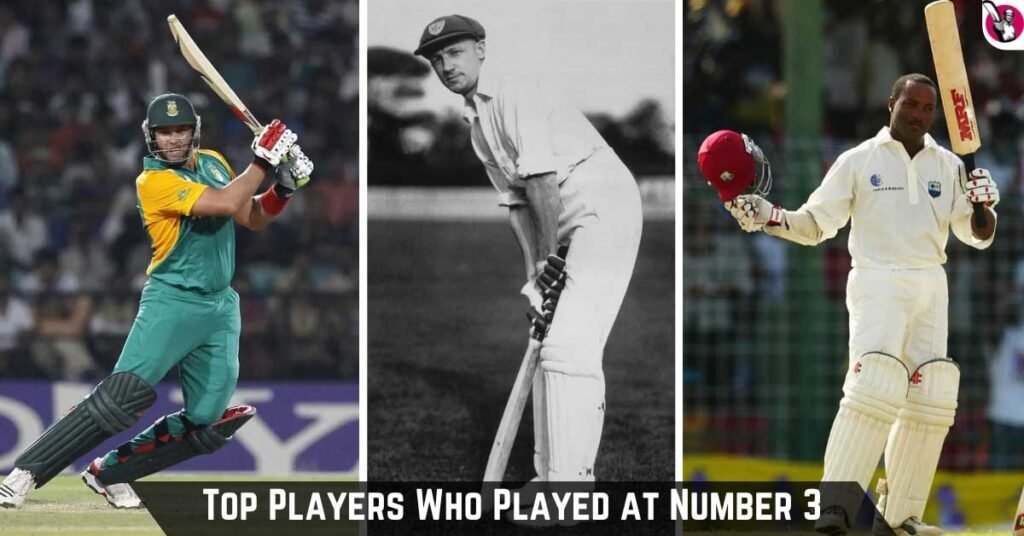
Test cricket has changed a lot over the years. After the introduction of more fast-pace formats, along with new batting techniques, the game has become slightly more dominated by batsmen. However, it was not always the same. The pre-2000 era was heavily dominated by lethal pacers. Yet, there have been several batsmen who showed that class is above everything. Here is the list of top number 3 batters from that era:
1. Sir Don Bradman
If you talk about cricket, you have to mention Sir Don Bradman. No adjective can define what he has done through this beautiful sport. With a dreamy batting average of nearly hundred (99.94), he amassed 6,996 runs in just 80 innings, including 29 centuries. This legend from Australia batted at number 3 position in international test cricket and simply owned this place. His career was nothing short of a dream sequence as he scored 200+ scores for 12 times, which is still an unbeaten record. His records and contributions to Australian cricket paved the path of sheer dominance that the Australian team continued for years.
3. Wally Hammond
Wally Hammond was elegance personified in the classical era of cricket. Representing England between 1927 and 1947, he was known for his authoritative strokeplay and unshakable presence at number 3. Hammond scored 7,249 runs in 85 Test matches with 22 centuries, many of which came when England needed stability. His highest score of 336 not out was once the world record. He wasn’t just a batsman; he was a complete cricketer who could turn the tide with the bat and also contribute with the ball. In a time dominated by great bowlers and uncovered pitches, Hammond made batting look effortless. His composure and sheer class at number 3 laid the foundation for English batting for years to come.
3. George Headly
Before the world knew the flair of Caribbean batting, George Headley had already carved his name in gold. Known as the ‘Black Bradman’, he was West Indies’ first true batting genius and the heartbeat of their lineup during the 1930s and ’40s. Batting at number 3, Headley shouldered the burden of an inexperienced team and often stood alone against some of the fiercest bowling attacks. In just 22 Test matches, he scored 2,190 runs at an astonishing average of 60.83, with 10 centuries — an incredible feat in that era. His calm, calculated approach and impeccable footwork made him nearly impossible to dislodge once set. Headley didn’t just bat for records; he batted for pride, for representation, and for the rise of West Indies cricket.
Related Read: Virat Kohli Diet Plan: A Complete Nutrition Guide
4. Viv Richards
Sir Vivian Richards was like a gangster on the field. He was known as the most stylish and brutal batsman on the field. He could take away the game not only with his batting but also with his attitude. Viv Richards brought fire and fearlessness to the number 3 position like no one else. In an era where fast bowlers dominated, he countered with swagger and raw dominance. Representing West Indies between 1974 and 1991, Richards scored 8,540 runs in 121 Test matches, often coming in early to rescue or demolish.
His fearless intent at number 3 shifted the power dynamic, bowlers didn’t just aim to get him out; they feared what would happen if they didn’t. With 24 Test centuries, including a blistering 56-ball hundred that was once the fastest, Richards showed that aggression could coexist with consistency. He didn’t just thrive under pressure, he owned it. His impact wasn’t limited to statistics; it was felt in the silence of bowlers and the awe of spectators.
5. Brian Lara
When Lara used to bat, even the opponent team used to crush on him. With a high backlift and insane technical supremacy, this West Indian legend revived the West Indies Sun that was probably sinking down. His flair, footwork, and hunger for big scores made him one of the most captivating number 3s in Test history. Though he occasionally batted at other positions, many of his iconic innings came from the number 3 slot.
Representing the West Indies from 1990 to 2006, Lara scored 11,953 runs in Test cricket, including 34 centuries. His 400* against England remains the highest individual score in Test history, a testament to his unmatched concentration and dominance. At number 3, Lara blended style with steel. He often came in under pressure but turned the tide with his elegant strokeplay. Whether facing spin or pace, he dictated the terms, often single-handedly carrying West Indies’ batting hopes on his shoulders.
6. Jacques Kallis
When you think of the best all-rounder of all time, Jacques Kallis becomes inevitable. Jacques Kallis was the definition of balance, in technique, temperament, and contribution. For South Africa, he wasn’t just a number 3 batsman; he was a pillar who could be trusted across any pitch, against any attack. With 13,289 runs in 166 Tests, including 45 centuries, Kallis combined old-school grit with unshakable focus.
At number 3, he provided calm after early blows and steadiness that let others build around him. Beyond his batting, he also picked up 292 wickets, making him one of the most complete cricketers in the game’s history. But with the bat in hand, Kallis never looked rushed, he built innings with patience and punished errors with precision. South Africa’s rise as a consistent Test force had a rock at its core, and that rock was Jacques Kallis.
Also Read: Can Shreyas Iyer Replace Virat Kohli in Tests?
Iconic Number 3 Test Batsmen from the 2000s
It was an era when new variations like reverse swing in pace bowling were dominating clearly. Although cricket leaned slightly towards batsmanship, quality bowling was still a nightmare for many batters worldwide. Under those circumstances, there were batsmen who stood like a wall at the number three position and led their teams out of misery. Here are the top number 3 batsmen from the 2000s:
Rahul Dravid
When the modern era needed an anchor, India had Rahul Dravid. In the 2000s, he redefined what it meant to bat at number 3 in Test cricket. Known as ‘The Wall’, Dravid wasn’t just consistent, he was immovable. With a watertight technique and a mind forged in pressure, he shielded India’s batting against hostile conditions and brutal bowling spells. Whether it was the raw pace of Australia or the swing of England, Dravid responded with calm authority.
His knocks in Adelaide (233), Rawalpindi (270), and Headingley (148) were more than centuries, they were statements of endurance and excellence. In the 2000s alone, he scored over 8,000 runs, many of them coming while holding fort at number 3. For a generation of Indian fans, Dravid wasn’t just dependable, he was a sense of relief every time an opener fell.
Kumar Sangakkara
Kumar Sangakkara was poetry wrapped in discipline. Batting at number 3, he brought a rare blend of elegance and hunger to Sri Lanka’s top order. From 2000 onwards, he became the strongest pillar of the Sri Lankan batting. With 12,400 Test runs and 38 centuries, Sangakkara remains one of the most prolific run-scorers in the format, many of those innings built from the critical number 3 slot.
His footwork was immaculate, his timing effortless, and his temperament almost monk-like. Whether navigating tricky conditions in Hobart or grinding out centuries in Galle, he always rose with purpose. Sangakkara didn’t just accumulate runs, he constructed innings with grace and resolve. He gave Sri Lanka the spine they needed during both transitions and triumphs.
Ricky Ponting
If you want to name a captain who changed the face of Australian cricket, it has to be Ricky Pointing. He was brutal on field, tactically sound, dominating, and fierce. Similarly, he provided decency to the top order while batting at number three. Ricky Ponting brought fire, flair, and fierce competitiveness to the number 3 spot. In the golden era of Australian dominance, it was Ponting who often walked in early and set the tone.
From 2000 onwards, his presence at number 3 became a nightmare for bowlers around the world. With 13,378 Test runs and 41 centuries in total, Ponting’s batting was a blend of sharp footwork, crisp drives, and unrelenting intent. In test cricket, he is the third highest run scorer in world cricket. Above him, there are only two- Joe Root and the great Sachin Tendulkar.
Recent Number 3 Test Players (2010–2025)
The number 3 position remains as vital as ever in modern Test cricket. But the challenges have changed, from flatter wickets to relentless schedules and multi-format pressure. Yet, even in this era, some batters have mastered this crucial slot. They have brought in not only consistency but also versatility, adapting to swinging Dukes, seaming Kookaburras, and spinning tracks with equal control. Here are the finest number 3s who have carried the legacy forward in the past decade and a half.
Jonathan Trott
Jonathan Trott brought calmness and control to England’s top order during a critical phase. Debuting in 2009, Trott quickly established himself at number 3 with a classical approach- solid defense, crisp strokes, and incredible patience. His 226 against Bangladesh and series-defining performances in the 2010-11 Ashes made him a cornerstone of England’s resurgence. Trott wasn’t flashy, but his ability to grind down bowling attacks gave England breathing room after early wickets. He scored over 3,800 Test runs at an average above 44, most of them coming from the vital one-down position. In an era of rising aggression, Trott stuck to substance, and it worked.
Cheteshwar Pujara
Cheteshwar Pujara has been India’s modern-day wall, stoic, unshakeable, and endlessly resilient. Batting at number 3, Pujara has absorbed pressure like few others in this generation. His contribution to India’s historic series wins in Australia, especially the 2018–19 and 2020–21 tours, will remain legendary. With over 7,000 Test runs, Pujara’s batting is a masterclass in patience, concentration, and trust in technique. In a format leaning toward speed and aggression, Pujara slowed the game down, one leave and one block at a time. He gave India time, and that time often turned into wins.
Kane Williamson
Kane Williamson is the calm in New Zealand’s storm, precise, composed, and ruthlessly consistent. He is one of those classical batsmen in the modern era that any cricket fan would love to watch. He plays orthodox shots with precision in such a way that batting looks the easiest task. As a number 3, he has carried the weight of his side with dignity and steel. With over 8,000 Test runs and 32 centuries, Williamson has shown that elegance and grit can go hand in hand. Whether it’s green tops in England or raging turners in Asia, he adapts with grace. His 200* against Pakistan in 2021 and his leadership during the World Test Championship triumph showcased his all-around cricketing class. At number 3, Williamson isn’t just a run-scorer, he’s the heartbeat of New Zealand’s golden era.
Also Read: Virat Kohli’s Daily Workout Routine: An Overview
Evolution of the No. 3 Position in Test Cricket
The number 3 position in Test cricket has always been a pillar of stability, but its role has quietly evolved with time. In the early decades, especially during the pre-helmet era, the number 3 batsman was often the team’s best technician. Someone who could survive the new ball, battle fresh fast bowlers, and rescue an innings if an opener fell early. Players like Wally Hammond, George Headley, and Don Bradman embodied that responsibility with grace and grit.
As Test cricket moved into the late 20th century, the number 3 role began to blend resilience with dominance. Players like Viv Richards and Ricky Ponting didn’t just hold the innings together. They took the game away from the opposition with counterattacking flair. The position started to demand more versatility, requiring batters who could switch gears, adapt to pitches, and manage both rebuilding and acceleration.
In the modern era, the role has only become tougher. Today’s number 3 must have watertight technique, but also the mental endurance to play long innings across continents, conditions, and packed schedules. Players like Rahul Dravid, Kane Williamson, and Cheteshwar Pujara have shown that the position is still about anchoring, but now with greater adaptability and composure in a three-format world. What remains unchanged is the essence. When this position stands strong, the team usually follows.
Global Test Averages – No. 3 Batters by Decades
Over the decades, the number 3 position has seen different styles of batting, shaped by changing conditions, bowling strengths, and team strategies. Some decades were defined by grit and survival, while others highlighted dominance and flair. Here’s a quick look at the average performances of prominent number 3 batters by decade, reflecting how this role has evolved over time.
| Decade | Top No. 3 Batters | Avg. Batting Average | Notable Traits |
| 1930s–1940s | Don Bradman, George Headley | 66–99 | Classical technique, high conversion rate |
| 1950s–1960s | Wally Hammond, Ken Barrington | 50–58 | Gritty, defensive, and consistent |
| 1970s–1980s | Viv Richards, Zaheer Abbas | 45–55 | Counterattacking flair, fearless strokeplay |
| 1990s | Brian Lara, Rahul Dravid (early years) | 48–54 | Stylish, temperament-driven innings |
| 2000s | Dravid, Ponting, Kallis | 50–55 | Match-defining, mentally tough |
| 2010–2025 | Williamson, Pujara, Smith | 47–54 | Technically solid, pressure absorbers |
These numbers may vary slightly across formats and opponents, but they clearly show how the number 3 position remains a consistent source of strength across generations.
Test Opening Partnerships: Average Balls Faced Per Wicket
The strength of a number 3 batsman often depends on how long the openers last. When openers soak up deliveries and blunt the new ball, it allows the number 3 to walk in under less pressure. But when early wickets fall quickly, the batsman is immediately tested. Here’s a look at how opening partnerships from different eras and teams have fared in terms of balls faced per wicket. It will help you understand more what those number 3 batsmen from different teams have done for their team:
| Team / Era | Balls Faced per Wicket (Avg.) | Notable Opening Pair |
| Australia (2000s) | 80–95 | Hayden & Langer |
| India (2010s) | 70–85 | Sehwag & Gambhir |
| England (2011–2014) | 90–100 | Cook & Strauss |
| South Africa (2008–2012) | 95–105 | Smith & Petersen |
| New Zealand (2010s–2020s) | 60–75 | Latham & Raval |
| Pakistan (1990s) | 85–95 | Saeed Anwar & Aamir Sohail |
These partnerships shaped the platform for number 3s to thrive. The longer the openers resisted, the stronger the foundation for the innings.
Modern Test Cricket and the Changing No. 3 Strategy
Modern Test cricket has changed not just in pace, but in approach. With flatter pitches, aggressive field placements, and the influence of white-ball formats, the role of the number 3 batsman has undergone a quiet transformation. Earlier, number 3 was the technician who would settle in, defend, and bat long. Today, the demands are more complex. A number 3 batter now needs to strike a balance between survival and scoring, especially with attacking captains setting fields that challenge patience.
Many teams also now float their number 3 depending on match conditions. On seaming tracks, a more experienced batter might step in early. On flat wickets, an attacking option may be promoted to maintain momentum. This tactical flexibility shows how teams no longer see number 3 as a fixed wall, but as a chess piece in a dynamic game.
Players like Marnus Labuschagne and Joe Root have adapted beautifully to this shift. They still carry the essence of classical number 3 batting but bring urgency when needed. In modern Test cricket, it’s not just about surviving the new ball anymore. It’s about seizing control, shaping the session, and setting the rhythm, all within the first 30 deliveries faced.
Experimental Use of No. 3 in Modern Cricket (2020s)
In the 2020s, several teams have moved away from the traditional mindset of locking a specialist batter at number 3. Instead, we’re seeing more fluidity in how this position is used, often based on match situations, pitch behaviour, or even tactical instincts. Some teams have deliberately shuffled the batting order to shield key players or send in aggressive hitters to disrupt rhythm.
England, under the Bazball approach, has experimented frequently with its number 3 slot. Players like Ollie Pope and even Ben Stokes have stepped into the role depending on the scenario. Australia too, at times, has shuffled Labuschagne and Smith based on left-right combinations or pressure situations. India, meanwhile, has rotated players like Shubman Gill, Cheteshwar Pujara, and Hanuma Vihari, Kanur Nair, Sai Sudarshan in and out of the number 3 position in recent years, particularly in overseas Tests.
This experimental approach reflects the broader mindset of modern Test cricket adapting on the go. The number 3 is no longer just the team’s most technically sound batter, but also a strategic tool. While purists may miss the solidity of a fixed No. 3, this era is clearly leaning toward flexibility and intent, even in the most traditional format.
Also Read: Virat Kohli’s Most Controversial Moments: Top 10 Career Flashpoints
World’s Best and Most Destructive Players Are Playing at No. 5 Today
Modern Test cricket is no longer just about survival; it’s about seizing sessions and pushing the game forward. That’s why we’re seeing a growing trend that teams are stacking their middle order with explosive, game-changing batters at number 5. The traditional idea of building an innings slowly is evolving. Now, captains want someone at five who can not only consolidate but also shift gears when needed.
Players like Ben Stokes, Rishabh Pant, and Harry Brook represent this new breed. They walk in after the top order has weathered the early storm and immediately look to accelerate, often turning the match in a single session. Their aggressive intent forces bowlers to alter lengths, breaks rhythm, and opens up scoring opportunities all around the wicket.
The shift also reflects a deeper strategy. With deeper batting lineups and stronger lower orders, teams are giving their number 5s more freedom to attack. It’s no longer just about holding the innings together, it’s about dominating it. In many ways, number 5 is the new engine room, where matches are not just saved, but won.
Harry Brook
- An emerging star in test cricket.
- One of England’s most exciting middle-order talents in the post-2022 era.
- Brought fearless intent to the number 5 position under the Bazball approach.
- Debuted in 2022 and quickly made headlines with his aggressive strokeplay.
- Scored four Test centuries within his first 12 matches, including dominant knocks in Pakistan.
- Known for his ability to counterattack and shift momentum within a single session.
- Doesn’t get bogged down; plays with natural flow and clarity in shot selection.
- Has a strike rate close to 90 in Tests — rare for a middle-order batter.
- Seen as the long-term solution to England’s aggressive, result-driven style of Test cricket.
- Adds explosiveness without compromising technique- a rare and lethal combination.
Travis Head
- Arguably Australia’s most destructive batter in Tests post-2021.
- Reinvented himself at number 5 with a fearless and fast-paced approach.
- Known for turning games with quickfire 70s and 80s in pressure moments.
- Combines natural attacking instincts with sharp game awareness.
- Regularly scores at an exciting strike rate.
- His ability to dominate spin and pace equally makes him versatile across conditions.
- Has added a new dimension to Australia’s traditional top-heavy lineup.
Rishabh Pant
- India’s ultimate x-factor in Test cricket since his test debut.
- Revolutionised the number 5/6 role with fearless strokeplay and counterattacking brilliance.
- His match-winning innings in Australia (Brisbane 2021) remains one of India’s greatest.
- Plays with intent from ball one, regardless of conditions or opposition.
- He is equally sound with defence and stroke making.
- Equally dangerous against fast bowling and spin, especially on turning tracks.
- Often walks in under pressure and breaks it with attacking momentum.
- Has scored centuries in England, Australia, and South Africa.
- His aggressive style redefined how wicketkeeper-batters are viewed in Test cricket.
- Brings chaos, creativity, and confidence, exactly what modern number 5 needs.

